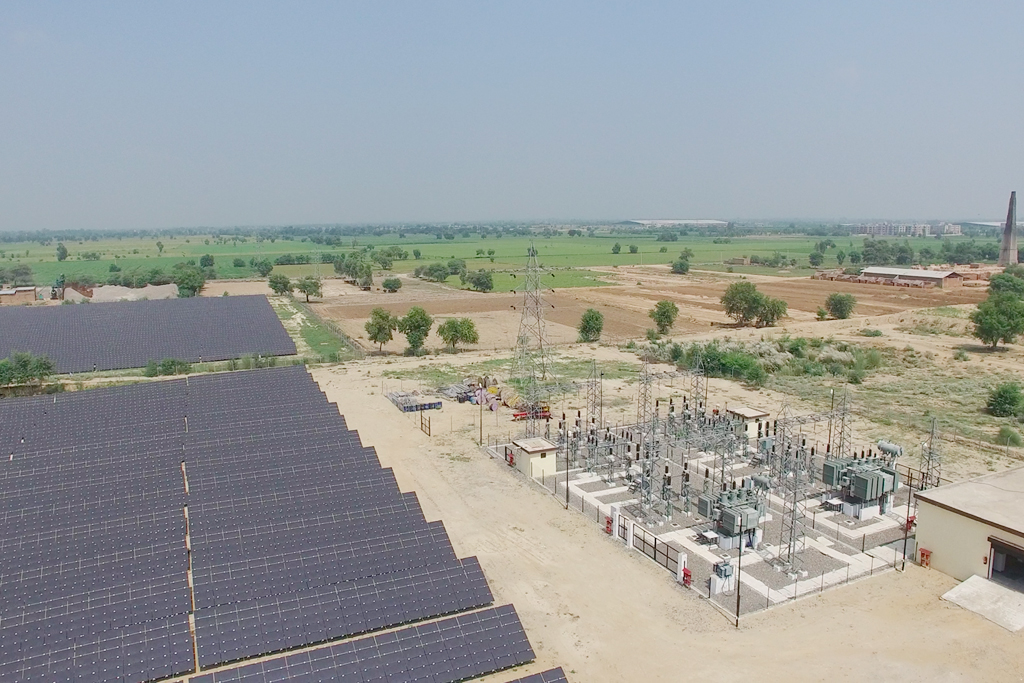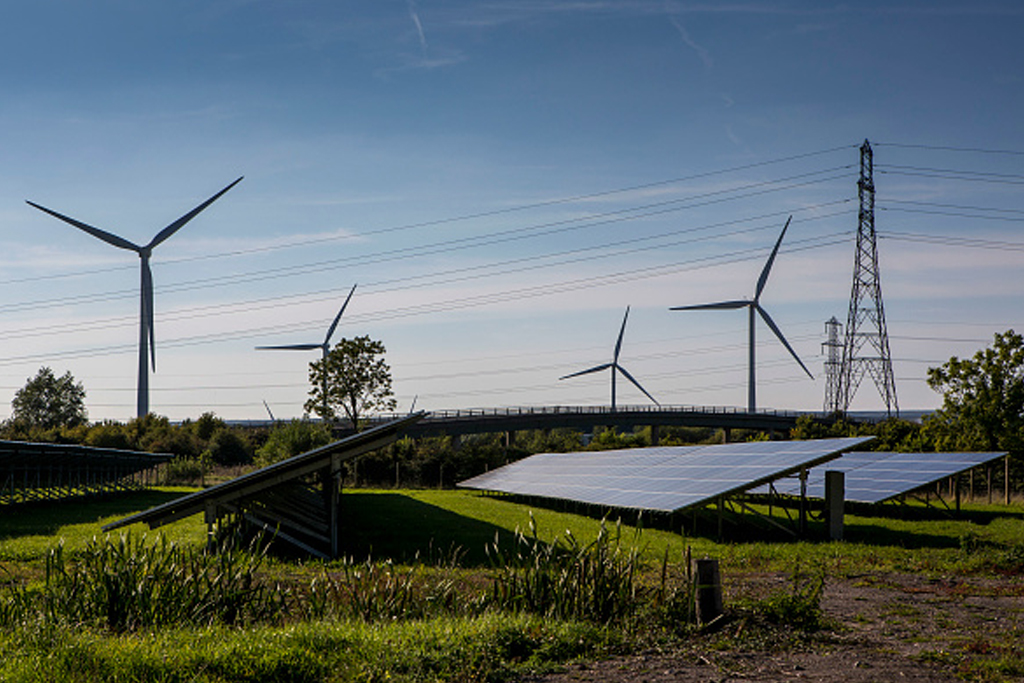The renewable energy industry can draw a lot from the government’s flagship ‘Make in India’ campaign to bolster its prospects.
With sustainability being the order of the day, manufacturers across the globe are increasingly developing more and more efficient ways of tapping renewable energy. Aimed at reducing dependence on fossil fuels, this welcome trend is contributing to clean energy competitiveness. Making giant leaps in the renewable energy sector, India, too, is at the heart of this transition.
In 2016-17, the output of renewable power projects went up by 26 percent, making the Indian renewable energy sector the fastest growing in the world. According to the National Resource Defence Council, more than 1 million full-time equivalent jobs will be created by the solar industry alone by 2022. This includes more than 2 lakh engineering jobs and more than half a million jobs in the skilled sector. Wind sector, on the other hand, will help generate 1.9 lakh jobs in the next five years.
The renewable energy industry can draw a lot from the government’s flagship ‘Make in India’ campaign to bolster its prospects. Equipped with high-quality manpower to support the domestic solar and wind manufacturing markets, India has the potential of emerging as a global manufacturing powerhouse catering to all the needs of the renewable energy sector. A future driven by clean and green energy is on top of every country’s sustainability agenda today, and India is no exception. The ambitious target of scaling up clean power production to 175 GW by 2022 will throw up huge opportunities for domestic manufacturers provided they reinvent themselves and innovate as per the demands of the market.
The future of the solar manufacturing business, for instance, will depend on how Indian companies beat the competition through constant innovation, quality improvement and marketing. The market potential for solar panels in India is huge despite the stiff competition from China, mainly in terms of price. To realise this potential, domestic manufacturers should accord top priority to clean energy strategies. The government should complement their efforts by offering them incentives, formulating effective energy and solar skill development policies, setting up more module assessment labs, encouraging R&D and doing away with procedural delays in executing projects.
Despite the immense scope, challenges remain, lack of scale and an underdeveloped supply chain being the major impediments. Flexible incentives and financing options, effective net metering policies and antidumping duties on foreign solar module manufacturers are the need of the hour. To make the Indian solar industry globally competitive, the government should work on a larger policy framework to get domestic manufacturing plans going. Domestic manufacturing can enable India to control the solar supply value chain, fetch more revenue and enhance profitability in the long run. The new policies should address the issues that concern manufacturers, like transport, infrastructure, taxation, labour laws and power outages. The government should take it upon itself to create a skilled workforce by introducing solar manufacturing in the National Skill Development Mission. It should extend support to large-scale projects and fully integrated manufacturing plants under the ‘Make in India’ policies.
It is imperative for India to support the solar manufacturing industry so as to achieve economies of scale and, in turn, lower costs. This way, strategies to drive innovation and promote exports can be in place much in advance, contributing to better appreciation of industry and competitive dynamics. Research institutions can also pitch in to develop industry linkages and support innovation. The government should take a cue from global trends and plan manufacturing bases as integrated solar industrial clusters. Though the country’s manufacturing policy recognises solar manufacturing as an industry of strategic importance, the implementation is lacking.
The fact remains that some of India’s largest solar equipment manufacturers are facing financial losses, priced out by Chinese competitors as the government prioritises cheap power over local manufacturing despite its ‘Make in India’ push. interestingly, prior to the announcement of the National Solar Mission, Indian solar firms were focusing on original equipment manufacturing and exports to Europe, amassing billions of dollars in export revenues between 2008 and 2012. As China came into the picture, module prices began to fall sharply, and Chinese firms were able to capture substantial shares of the global market at the cost of Indian suppliers. Chinese companies have gained the most from the Indian solar boom, accounting for about 85 percent of India’s solar module demand. Modules produced in India generally cost around 10 percent more as compared to the ones from China. The government is trying to correct this imbalance by offering 20-25 percent capital subsidies and other incentives to domestic manufacturers under the “Make in India” campaign, in addition to the Viability Gap Funding (VGF) mechanism and the relaxation under GST, which waives 12 percent countervailing duty and 5 percent VAT on solar components produced domestically.
Going by the government’s capacity targets, the total annual solar module market in India could go up to more than $10 billion in the next few years. This is great news, but since the rush of capital can put tremendous stress on the creaky power infrastructure in India, it becomes imperative for the government and industry to take corrective measures. A ‘reduce, encourage, deregulate’ policy towards power generation can go a long way in supporting the Indian manufacturing industry as a whole with cheap and readily available power. The government, which has grand plans to draw 40% of the country’s energy from renewables by 2030, intends to spend Rs 210 billion ($3.1 billion) on state aid for India’s solar panel manufacturing industry to increase India’s photovoltaic capacity and create an export-oriented industry.
In 2016, India accounted for 5 percent of the world’s renewable-energy capacity and invested $9.7 billion (Rs 64,990 crore) in the sector, according to the Renewables Global Status Report 2017, released by REN 21, an international non-profit working on renewable energy. Direct and indirect jobs in renewables, excluding large hydropower, reached 8.3 million in 2016, with China, Brazil, the United States, India, Japan and Germany being the leading job markets. Jobs continued to shift towards Asian countries, which together accounted for 62 percent of jobs in 2016, as compared to 50 percent in 2013, according to the International Renewable Energy Agency (IRENA), a global intergovernmental organisation.
However, in 2016, local manufacturers struggled in the face of cheap imports. Indian firms accounted for barely 13 percent of supply, according to a 2017 report by IRENA. Domestic manufacturers claim that the high demand for imports is to be blamed for their capacity underutilisation. Alarmed by the situation, the Indian Solar Manufacturers’ Association has asked the Directorate General of Safeguards to consider a safeguard duty on solar cells and modules, according to a report by Bridge to India. But the report did not advocate safeguard duties. There is “little upside to imposition of anti-dumping or safeguard duties on solar cells and modules. There is no evidence from other countries of such duties resulting in any long-lasting benefits for domestic manufacturers. At the same time, any duties raise the risk of sidetracking India’s solar capacity addition target, affecting more than 10,000 MW of project pipeline,” it said.
Another problem plaguing Indian manufacturers is the lack of access to funding to build manufacturing units with private banks reluctant to offer loans at attractive rates. The World Trade Organisation’s ruling that India’s Domestic Content Requirements (DCR) contravened its trade agreement has also affected domestic manufacturers. At the same time, the government has done well by keeping DCR quota for government-based energy development projects. Favourable policies on easy financing, solar park development, long tenure loans, net metering, viability gap funding, mandating solar installations in government buildings and initiatives like the International Solar Alliance and Make in India campaign have definitely helped domestic solar manufacturers, but a lot more remains to be done.
Looking at the positive side, the Indian government is emphatic about supporting domestic manufacturing. In addition to modifying the DCR rules, it is believed to be in the process of releasing a new solar manufacturing policy which will provide companies setting up domestic integrated manufacturing facilities with Viability Gap Funding (VGF), a financial subsidy, to enable them to compete with their global counterparts. The reasoning is that state support is provided to manufacturers to partly compensate them for the high cost of credit in the country and that this policy does not distort trade.
It is clearly very difficult to promote domestic manufacturing in India without solving macro issues like ease of doing business, infrastructure, cost of power, cost of finance and local ecosystem for raw materials. The government has been attempting various initiatives, including DCR and now incentives to support domestic manufacturing. To make India a renewable energy manufacturing hub, the Ministry of New and Renewable Energy has been promoting private investment in renewable energy through an attractive mix of fiscal and financial incentives. The government is also encouraging participation from other countries by allowing 100% foreign direct investment in renewable energy.
The solar cell and module markets overseas have also experienced similar setbacks due to oversupply of products, low margins and drop in cost of raw materials. But the demand for imported solar cells and modules has been significantly higher in India due to more cost effectiveness, better quality and higher efficiency as compared to the domestically manufactured products. The solar inverter industry in India is still at a nascent stage, but it will start coming into its own once the domestic solar module industry is firmly established.
In order to increase the domestic manufacturing capacity and utilisation to levels required to meet annual targets under the National Solar Mission, also envisaged in the ‘Make in India’ plan, DCR of cells and modules was launched for some of the projects undertaken as part of the said Mission. However, none of the policy initiatives at the state level mandated any DCR. Despite this initiative, domestic solar cell manufacturers continued to see sporadic and low levels of utilisation of their manufacturing capacity over the years and most of them recorded losses. They attribute their losses, among other things, to high cost of production and capital expenses, decline in exports and rise in demand for imports.


